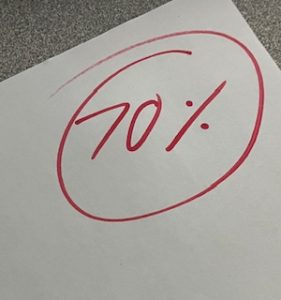Worsening Mental Health Plagues American Teens
February 9, 2022
Declining mental health has plagued many teens to the point of crisis. The pandemic has also been a contributing factor the past couple years.
Every year, there seems to be another decrease in the mental state of teens. The question is: what is causing this decline in teens’ mental health?
The answer is not simple nor just one thing. Every aspect of society plays a role in teens’ mental health whether positive or negative. Some of the most commonly talked about aspects leading to this mental health crisis include social media, education and, most recently, the global pandemic.
Within these areas, there are branches upon branches of what seems to be harmless content and exposure that are more damaging than one might think.
The Media
As a result of a self-obsessed culture, American youths face the consequences of past indifference. Culturally embedded ignorance has caused teens to have little to no positive examples of mental health care in mainstream media.
For example, Simone Biles in the 2020 Tokyo Olympics dropped out due to her mental struggles.
“I have to focus on my mental health and not jeopardize my health and well-being,” reasoned Biles.
What should have been a positive example of self-care for American youths resulted in an online battle among mostly adults claiming Biles to be selfish and letting down the country.
The truth is: Simon Biles is not letting America down nor selfish for respecting her health and well-being. She is a person, not a puppet for our entertainment.
Due to a lack of good representation of mental health in the media, teens have turned to social media platforms such as TikTok. These platforms allow them to express their struggles and find others in the same boat. Nonetheless, unrealistic standards have only worsened many teens—especially young girls—mental states.
Beauty standards on apps such as TikTok often change suddenly. It’s impossible to keep up with frequently changing trends. Rapidly changing trends create insecurity about teens’ own wardrobe and looks; it feels as though every few months new styles become popular and “old” deemed not stylish.
Studies have shown that the rise in mental health issues since the early 2000s are likely correlated with social media use. Possible reasons for this rise include unrealistic beauty standards displayed, hateful activity and interactions and the spread of misinformation.
Despite the numerous negative effects, many teens turn to social media as an escape from reality. Along with the bad there is also good. Forms of self-expression and creativity are often encouraged on certain platforms, and teens can connect with others with similar interests. However, the positives don’t always outweigh the negatives.
The American School System
Over the years, pressures on teens in regards to schooling and education have skyrocketed. The idea of being properly educated has gone beyond the real meaning of learning and gaining knowledge; it seems to have become all about grades and testing.
While the grading system isn’t inherently bad, schools have gone overboard with grading policies and expectations for students without considering mental health. Although some schools are better than others, the debate over where to draw the line on homework and testing has become increasingly prevalent across the country.
There is no definite way to fix schools, but listening to students and considering mental health is a step in the right direction. Important things for administrators to consider include teens’ home life, mental state and when work is too much.
If administrators and schools put more focus onto the mental health of their students, teens can learn properly and more effectively while still being prepared for college life and a future career.
The Pandemic
As of the past couple years, the global pandemic has caused a decline in teens’ mental health with 46% of parents in a poll report noticing declining or new mental health struggles for their teen since the beginning of the pandemic.
According to Mott Children’s Hospital pediatrician Gary Lee Freed, “Many teens may feel frustrated, anxious and disconnected due to social distancing and missing usual social outlets, like sports, extracurricular activities and hanging out with friends.” This isolation has caused anxiety and depression in many teens.
While most schools in America are back in person and social activities have started up again, the lasting effects from the previous isolation still stand. Many teens felt anxiety returning to school after being online for a year. Re-connecting with teachers and an in-person learning environment has taken a toll on students with suffering grades and study habits.
Due to this struggle to re-connect and its effect on school work, students feel stressed and behind on their work, with many losing motivation. This added stress only continues to worsen the mental health of teens.
With anything related to mental health, there are always many causes. Other leaders to mental health struggles not mentioned include religion, one’s ethnicity and culture, sexualtiy, discrimination, gender identity, home life, childhood and generational mental disorders.
For teens struggling: there is no shame in getting help. Services such as the National Suicide Prevention Lifeline (800-273-8255) and National Alliance on Mental Illness hotline (800-950-NAMI (6264)) can help those suffering from mental illness.
The correct path to better the mental health of American youth is accessed through listening and understanding. Being able to put oneself into the shoes of these struggling teens can create more understanding in American society about what youths are going through.
With open mindedness, Americans can better learn what needs to be done in order to slow this decline of mental suffering among current and uprising teens. The solution isn’t simple, but it isn’t out of reach.








